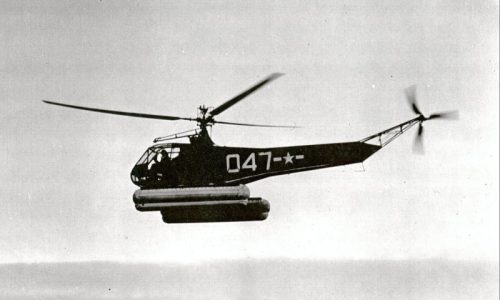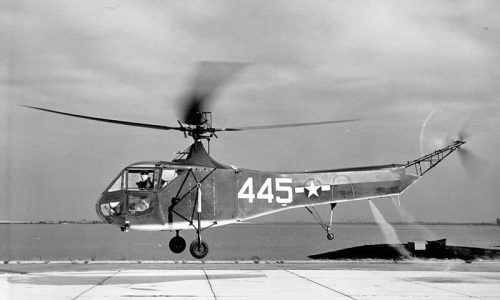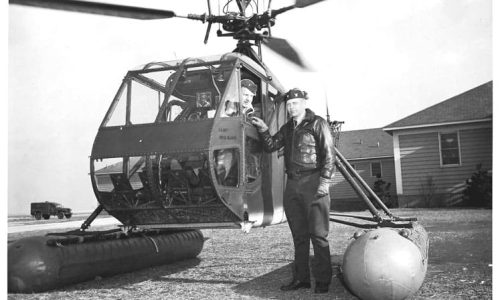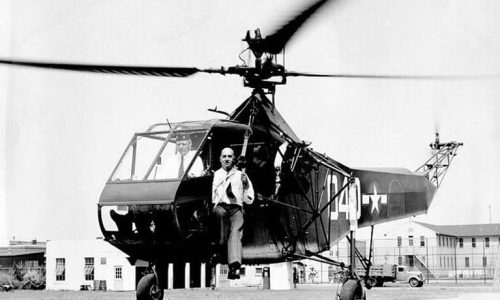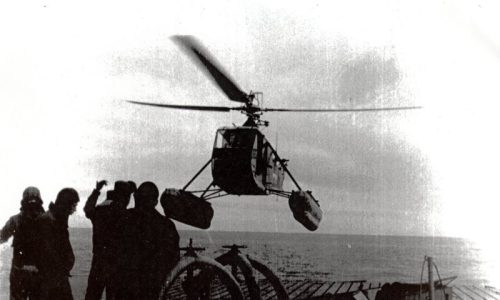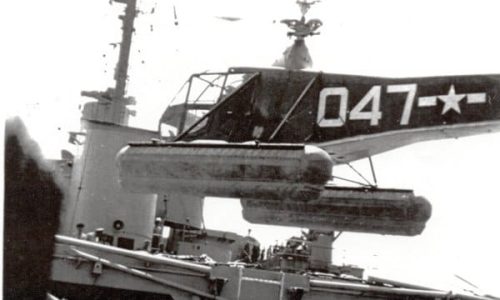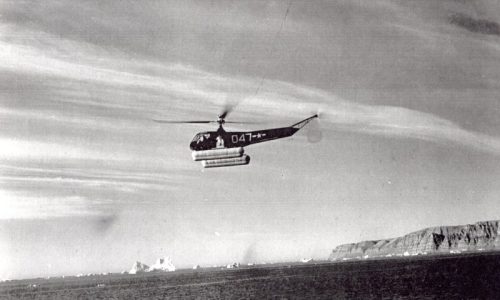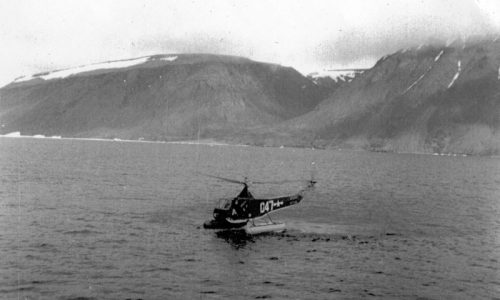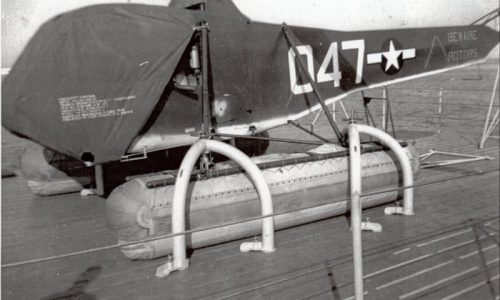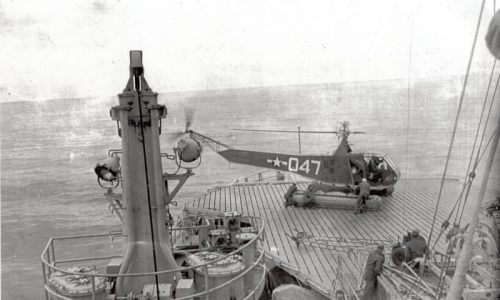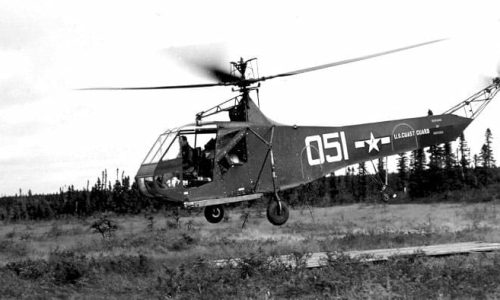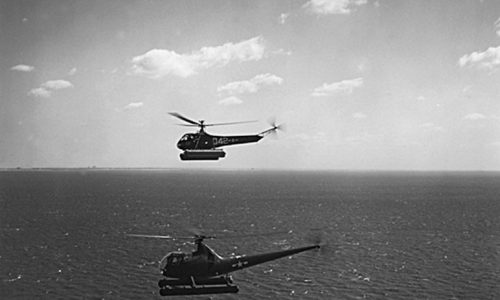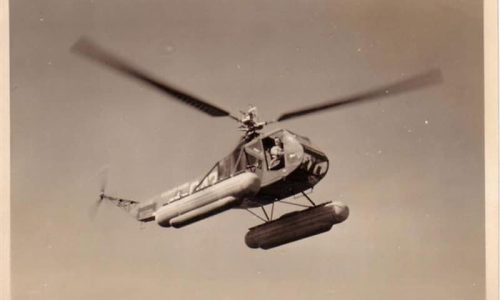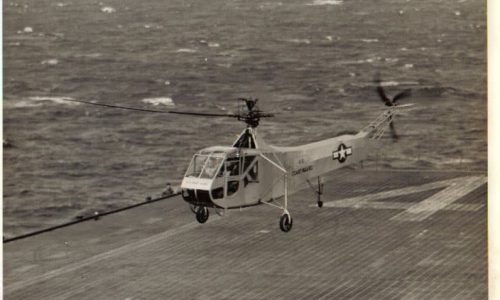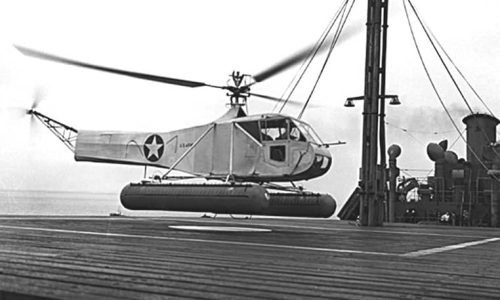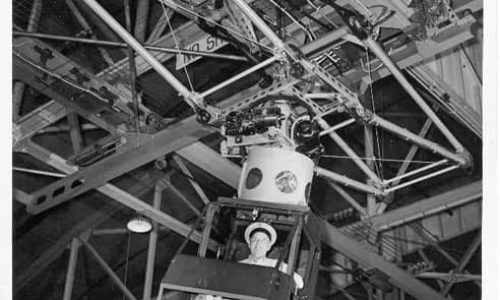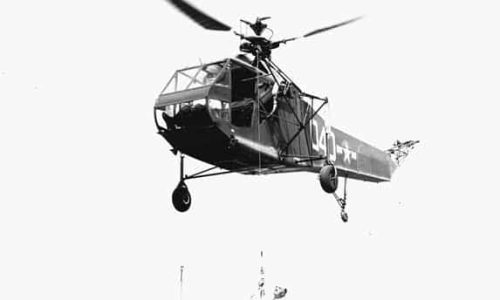It was the Army that first recognized the potential of the Sikorsky Helicopter. The YR-4A could not carry much more than the pilot and one other person. However the HNS-1, the Navy designation for the R4 was built to train pilots. Operational missions would be handled by later aircraft that were coming up on the production line.
ADM Ernest J. King, Chief of Naval Operations issued a directive that placed the responsibility for the seagoing development of the helicopter with the U.S. Coast Guard. In November 1943, a helicopter pilot training program was begun at Coast Guard Air Station Brooklyn, CDR Frank Erickson Commanding. Erickson trained a total of 102 helicopter pilots and 225 mechanics during the war, including personnel from the Army Air Force, Navy, Coast Guard and the British Army, Royal Air Force and Navy. He went on to develop equipment such as the power hoist, rescue slings and baskets, floats that permitted helicopters to land on water and techniques like landing and taking off from vessels at sea and hovering in all weather and wind conditions. His initial experiments all took place with the HNS-1.
The Coast Guard helicopter pilot training school was terminated in 1945. Further Training would be done by the Navy. Most of the HNS-1s were returned to the Navy. Five were retained by the Coast Guard.
Though limited, Coast Guard Aviators were able to do amazing things with the HNS-1.
IN 1945an HNS was completely broken down and transported by a fixed-wing aircraft to the area to rescue the crew of a downed Royal Canadian Air Force PBY deep in the wilderness. The lead pilot for this SAR operation was LT August Kleisch, USCG. Another rescue took place in Gander, Newfoundland in September, 1946, where an HNS and an HOS were broken down and transported to the area to rescue the passengers and crew of a Sabena airliner that had gone down deep in the forest. The first pilot to arrive and begin rescue flights was again LT Kleisch and he was soon joined by CDR Erickson, LT Stewart Graham, USCG, and LT Walter Bolton, USCG. These major rescue efforts proved the usefulness of the new helicopters in saving lives in remote locations and helped to secure a place for these rotary-winged aircraft in the Coast Guard’s inventory.

